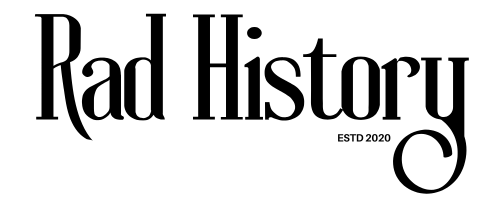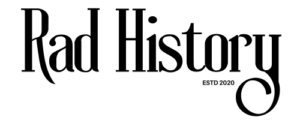In the modern workplace, there are two terms that have entered the lexicon that highlight the tensions that can exist between employers and employees: quiet quitting and conscious quitting. Both terms refer to an insistence to set boundaries and a rejection of expectations that reflect a dissatisfaction with work and/or the workplace. Some employees may prioritize ethics, integrity, purpose and well-being over profit, revenue generation, and other established metrics for business success.
Understanding the differences between these two terms and trends is essential for business leaders, HR professionals, and employees that need to navigate this complex landscape.
What is the Reason for These Trends?
Both quiet and conscious quitting have not appeared out of thin air but they have emerged as a response to work culture issues that have been quietly simmering for years. In the lead up to this situation, employees were often encouraged or subtly manipulated to give more than the job strictly required.
A hustle mindset was fostered, those that put in the extra hours were more likely to be promoted and it demonstrated that the employee was committed to the company. Of course, this was unpaid overtime and gradually the sacrifice of personal time for the job was normalized. This rarely paid off for the employee, they simply worked harder for less and stress became a real problem for many people.

Eventually, the true costs of this flawed approach to business became impossible to ignore. According to Gallup data, employee engagement is extremely low across multiple industries. Approximately a third of US workers feel any genuine engagement at work. The burnout rate rises steadily and the effects were compounded by the Covid-19 pandemic when those working from got a taste of a different way to earn money. Some preferred the improved work-life balance and others question whether they needed a job at all and became engaged with the gig economy.
Against the various factors, we began to see the terms quiet quitting and conscious quitting emerging in news reports. This was the sign of a cultural shift and they can be regarded as two types of resistance against the dominant work culture of the time. Quiet quitting is a desire to disengage with the work to put in just enough to avoid being fired and collect a salary. Conscious quitting is when the employee chooses to leave their career to pursue ways to earn money that are closely aligned with their values and integrity.
Understanding Quiet Quitting
This is a passive form of workplace resistance that may be difficult for an employer to deal with. The employee turns up for work on time and they put in the required hours, but they only do what their job description requires of them. They will put in no more extra effort and yet they will not fall under the minimum requirements to keep their jobs. The agreed upon employee contract is upheld, but the entire concept of the “hustle culture” is entirely rejected. This employee will not perform tasks outside of their responsibilities and they will never work overtime without being paid for their time.
To summarize, there are a couple of key characteristics of this working mindset.
- Firm Boundaries: The employee will not answer an email after work hours, they carefully protect their personal time and they will do no work outside their designated scope of responsibilities.
- Emotional Detachment: Work is simply a source of revenue, there is no identification with purpose or brand loyalty that forms part of the employees identity.
- Stress Awareness and Reduction: Those engaged in quiet quitting place an emphasis on their work-life balance and they will refuse to work to the point of exhaustion.
- The Minimum Requirements: The employee will carry out their core duties to the best of their ability, but they won’t stay late, take on more work or volunteer to perform extra tasks.
This ethos became popular because after years of “hustle culture” many employees saw next to no return for their efforts and they felt undervalued. Sacrificing health and personal time to pursue nebulous career goals began to ring hollow. Many people have shifted priorities to their families, sports, hobbies and other non-work related activities. The final nail in the coffin for many workers was the pandemic, when the line between work and home life became blurred.
What is the History of Quiet Quitting?
This term may be recent, but the concept of doing the bare minimum isn’t new and it’s been around for centuries in a variety of forms. The easiest way to understand the evolution into what we see today is to look at the recent history in chronological order.
Early 20th Century
The formation of labor unions utilized work-to-rule as industrial action to improve pay and working conditions. This was very different to the traditional strike approach when work was stopped entirely. The workers would not walk away from their jobs, they simply put in less effort and this was hard to quantify and penalize. Adopting this approach highlighted the amount of extra work that employees contribute without getting paid for their labors.

The 1950s-1970s
The corporate structure had changed, office jobs were now more prevalent and sociologists began employee disengagement studies. They identified concepts such as “soldiering” which was a term Frederick Taylor coined for workers that would limit their output deliberately. Another popular term was “withdrawal behaviors” that could drastically limit the output of the company. There were three key sources of disengagement: poor management, perceived unfairness, and lack of recognition.
The 1980s-2000s
During this period researchers began to use other terms for this type of behavior, such as “discretionary effort” and “job embeddedness”. The former refers to extra energy that employees would deliver beyond the basic needs of their role. The latter is the ties that were believed to keep employees motivated within their assigned role in the company. At this time, Gallup and surveys from other sources documented that disengaged employees that were present, working and yet checked out emotionally were on the rise.
The 2010s
This period was the inception of the modern “hustle culture” with numerous startups and tech companies that glamorized working long hours. The work was regarded as an identity, every employee was expected to go above and beyond to ensure that the company would be successful. The fallout was considerable, mental health conversations became mainstream, and the burnout rates rose dramatically.
2020-2022
The burnout rate among knowledge workers and others spiked at this time. The rise of remote working opportunities meant that the pressure to always be present and ready to work was too much for many employees. When the pandemic hit that line between work and home life simply evaporated and people began to question their values.
From Disengagement to Defiance: A Timeline of Modern and Historical Worker Pushback
| Feature / Element | Quiet Quitting | Conscious Quitting | Historical Parallel |
|---|---|---|---|
| Definition | Disengaging from extra, unpaid work while staying in the job | Leaving a job intentionally for values-based or well-being reasons | Labor strikes, “sit-down” protests |
| Motivation | Burnout, poor boundaries, lack of recognition | Ethical misalignment, toxic culture, purposeful career redirection | 1960s counterculture work rejection |
| Action Taken | Doing only what’s required (no extra effort) | Resignation and often public justification | Whistleblower movements, civil disobedience |
| Risk Level | Low to moderate (job security risks) | High (loss of income, career gaps) | Industrial-era walkouts, blacklisting |
| Popularized By | TikTok trends and Gen Z discussions on work-life balance | Corporate activism, mental health advocacy | Labor unions, conscientious objectors |
| Cultural Framing | Often seen as passive-aggressive or “lazy” | Viewed as principled, bold, or disruptive | The “slacker” of the 1990s vs. the 1970s conscientious objector |
| Long-Term Impact | May prompt managerial change or policy shifts | Forces companies to re-examine culture and purpose | Rise of workers’ rights laws and protections |
Understanding Conscious Quitting
Conscious quitting is not about scaling back the workload, it’s stepping out of a job entirely to work in a freelance capacity or to seek a job that’s more closely aligned with your values. This term gained traction from 2023 onwards as employees rebelled against employers that violated their ethical and workplace boundaries. This is a relatively recent and catchy phrase with a foundation in quiet quitting that goes a little further. The key characteristics of conscious quitting include the following.
- Social Impact: Some employees choose to move away from workplaces where they believe that discrimination, inequality and harmful practices are taking place.
- Mental Health: Some people refuse to continue to work in a “toxic workplace” that degrades their mental health.
- The Environment: Those that regard their employers as drivers of climate change or that exploit natural resources may engage in conscious quitting.
- Values and Purpose: There is a significant portion of the workforce that want to feel that their work is contributing to a meaningful purpose.
What are the Factors that Drive Conscious Quitting?
This term is recent, but the concept of conscious quitting isn’t new and there are a number of factors that have driven this cultural change since 2023.

- The Inception: This term became prevalent in 2023 when ESG advocates, HR publications, and LinkedIn influencers began to talk about it in online spaces. It was associated with a broad movement of resignations that were values-led.
- Disaffected Generations: Both millennials and the up and coming Gen-Z employees would report alignment and purpose over income as their top priorities for their careers.
- Social Media: Conscious quitting employees would share their stories of leaving companies with ethics that they could no longer support. This provided validation from other disaffected employees and signal-boosted the messaging.
- ESG Frameworks: The Environmental, Social, Governance (ESG) frameworks associated with corporate practices were easier to review and criticize.
What are the Generational Trends?
Although Quiet Quitting and Conscious Quitting are different they do have some similarities. Both movements are a reaction to exploitation in the workplace where an employee feels that they are being taken for granted.
Each movement is equally resistant to the concept of “hustle culture” and the emphasis is placed on working to live and not living to work. In both movements we can see a search for deeper meaning in work that reflects the values of the employee. In Quiet Quitting this is expressed as disengagement where Conscious Quitting goes further with a complete break with the employer.
However, the attitudes towards Quiet and Conscious Quitting can vary depending on the employees generation.
Baby Boomers (1946-1964) and Generation X (1965-1980)
These two generations are more likely to engage in quiet quitting as a pragmatic choice if they are unsatisfied with their employer. They tend to have mortgages, family obligations, and tenure that can make conscious quitting far riskier.
These generations may be emotionally disengaged and yet put in just enough effort to keep their jobs. There is a trend of mid- to late-career professionals choosing early retirement to avoid a burnout which could be considered to be a form of Conscious Quitting.
Millennials (1981-1996)
This generation is more likely to quit a job if they feel burnt out or undervalued. They came of age when the Great Recession was in full swing and they are used to economic shocks. This makes millennials very suspicious of loyalty to an employer that will probably “pull the rug out from under their feet” at some point.
Some millennials spent an early part of their careers as part of the “hustle culture” that promised them promotions for unpaid work that were never realized. Some surveys had shown that millennials value a good work-life balance and flexibility highly.
Generation Z (1997-2012)
This is the most adamant generation when it comes to alignment between work, diversity, sustainability, identity and social justice. They are far more likely to consciously quit for ethical reasons and with transparent company reviews they will walk away if they detect hypocrisy or a toxic culture at work. According to Deloitte’s Global Gen Z and Millennial Survey in 2023 around 40% of Gen Z respondents rejected or left jobs for ethical reasons. This figure is far higher than millennials, Gen Xers and Boomers.

Why is This Culture Driven by Younger Employees?
As you can see from our generational summary above, it’s clear that the driving force behind most quiet and conscious quitting is the younger employees. There are five key reasons why this is happening.
- Values: Both Gen Z and Millennials will expect an employer to align with their values and if there is a disconnect they are more likely to leave without compromise.
- Transparency: It’s never been easier for a potential employee to see how companies operate and treat their employees.
- The Rejection of Career Ladders: The younger workers are used to instability and layoffs and they are under no illusion that company loyalty will be reciprocated in the future.
- Mental Health: The younger generations are focused on well-being and avoiding burnout and they often use quiet or conscious quitting to set boundaries to protect themselves.
- The Gig Economy: It’s never been easier to become a freelancer, start your own business and earn money. This lowers the fear associated with conscious quitting and many employees now have side gigs to fall back on and build up to avoid financial hardship.
How Do Employers Contribute to Quiet and Conscious Quitting?
All employees play a role in the broader business, but organizations tend to create the conditions that drive an employee to adopt these two positions. These viewpoints tend to thrive in the companies that have poor communication, lack of recognition, and toxic working environments. The workloads may be unsustainable if under-resourcing and overworking are present. This can lead to burnout and poor employee retention which will inevitably harm the company in the long run.

How Can an Employer React?
Both quiet and conscious quitting are reshaping modern workplace dynamics and employers are faced with a stark choice. They can adapt to meet the challenge and engage with their employees or reject them and run the risk of losing productivity and talent. Those that want to engage with their employees will find that a surface-level fix is unlikely to satisfy them and a strategic approach with transparency, purpose and respect is preferable.
The root cause of quiet quitting is frustration and confusion that the employee has about what’s expected of them. This can occur when boundaries are unclear and employees feel pressured to do more with no return. All job roles need to be clearly defined and the definition of success will vary depending on the specific role. Communication must be a priority and capacity issues should be transparent to avoid last minute demands on the employees down-time. The work culture should be comfortable and the employee should get to refuse unreasonable demands with no fear of repercussions.
All efforts to help the organization to succeed should be recognized and rewarded in a meaningful way. If extra effort is unappreciated or unnoticed, it will steer the employee into quiet quitting and disengagement. Adopt a recognition program that can be informal with thank you notes, public shout outs or formal with an award or bonus. The recognition should be tailored to each employee for a personal touch with plenty of praise, team celebrations, and more. Those employees that choose to take on extra challenges to mentor others, innovate and help the company need to be recognized. This will boost morale, improve motivation and reinforce behaviors that drive engagement with the organization.

Both quiet and conscious quitting offer a bleak vision of what a disengaged workforce looks like. A modern employee isn’t going to accept an unrealistic work-life balance or work towards some nebulous goal that never materializes. People have simply been burned too many times and they are unlikely to give their loyalty freely.
Organizations will need to understand that clear boundaries are more important now than at any other time in modern history. Employees are people with values, aspirations and ethical concerns that shape their relationship with any organization. These two trends are either a retreat from over committing or a way to gain some independence from an uncaring employer. They reflect that modern employees want more than a simple paycheck, they need a place where they can find purpose, respect and a fair work-life balance.








